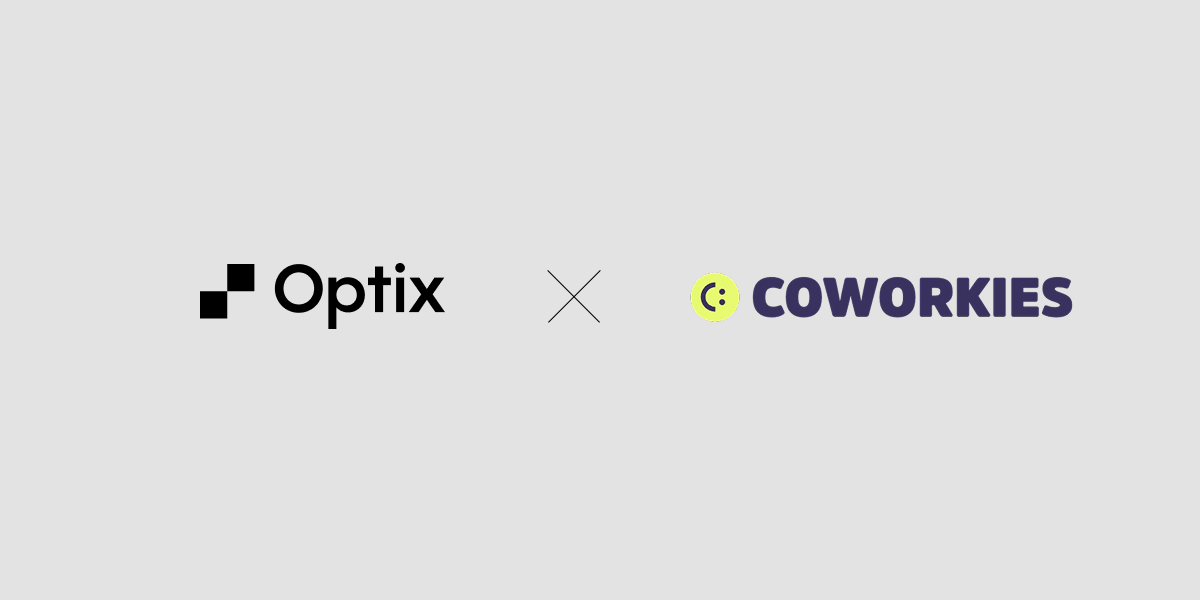
TL;DR
- Only 11% of coworking spaces are profitable in year one, but mature spaces can reach 20–30% margins with the right model.
- Diversify revenue beyond memberships, cut costs through automation, and leverage ancillary services for steady income.
- Differentiate your brand, track KPIs quarterly, and scale mindfully to capture a share of the $82B coworking market by 2034.
Last updated: October 23, 2025
Only 11% of coworking spaces turn a profit in their first year…but for those that succeed, the rewards can be astronomical.
Well-run medium and large coworking spaces often achieve 20–30% net profit margins once mature. With the global coworking industry projected to grow from $22 billion in 2024 to $82 billion by 2034, now is the time for operators to double down on strategies that drive sustainable profitability.
This article will walk you through the tactics that set profitable coworking spaces apart based on our 10+ years working in the coworking industry.
From diversifying revenue streams and optimizing operations to building a community-driven brand that keeps members coming back, you’ll find actionable insights backed by hard data, industry benchmarks, and proven examples.
- Are coworking spaces profitable?
- What is the average profit margin of coworking spaces?
- Profitability benchmarks for coworking spaces
- The importance of revenue diversification and profitability in coworking
- How to increase profitability of your coworking space through controlling costs
- How to use differentiation to improve the profitability of your workspace
- How to improve the profitability of your coworking space
Are coworking spaces profitable?
According to DeskMag, roughly 46% of coworking spaces are profitable. That means just under half of every coworking space that opens will reach profitability. Considering around 65% of small businesses across all industries are profitable, profitability is considerably more rare in the coworking sector.
It is important to note however that the number of profitable coworking spaces has been trending upwards over the last 10 years. As the industry matures and operators gain knowledge of best practices and standard operating procedures for how to run a successful coworking space, we expect profitability to become more common.
10 Reasons Your Coworking Space Isn’t Growing (And How to Fix Them)
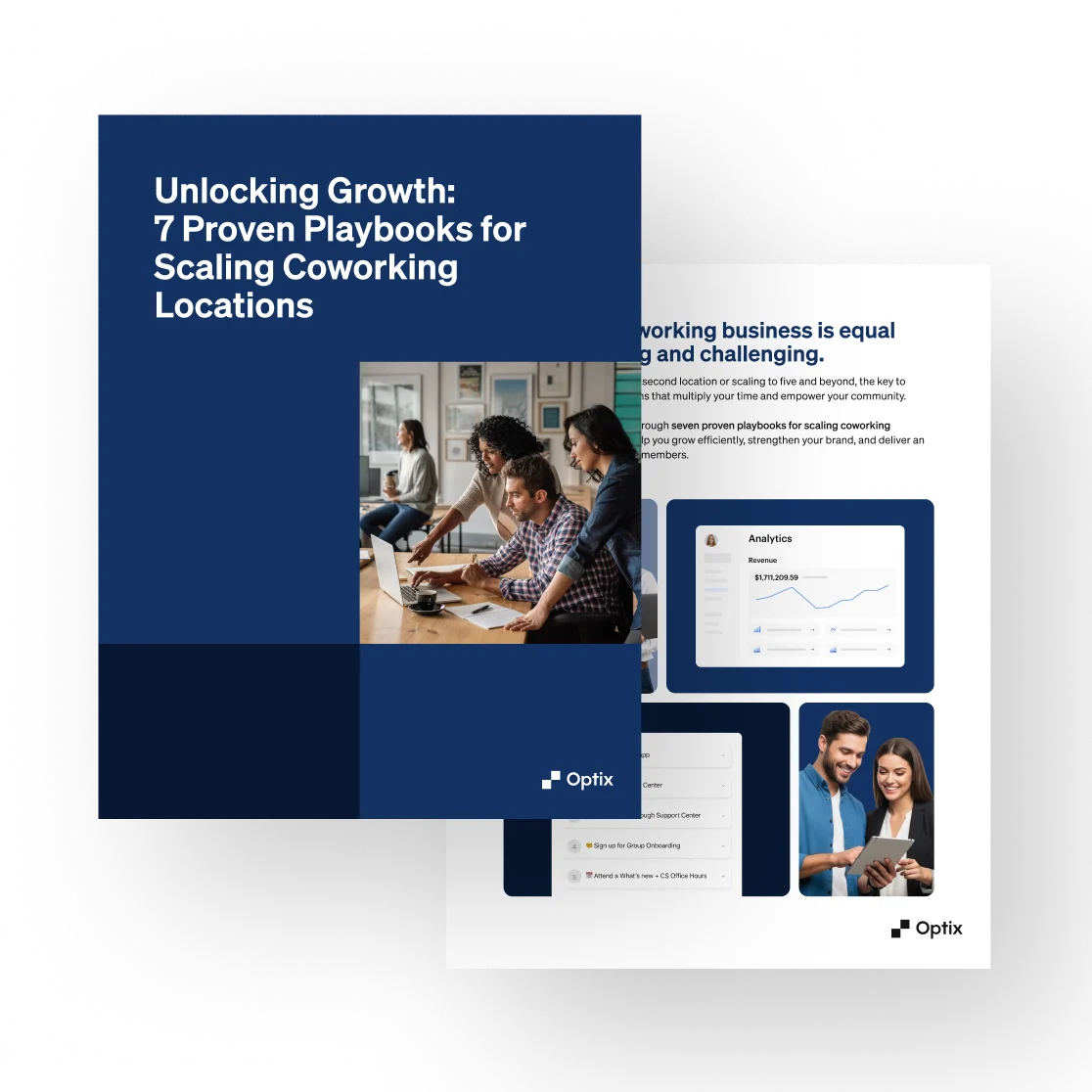
What is the average profit margin of coworking spaces?
The average profit margin of a coworking space is 19.7%. In 2019, the average profit margin of a coworking space was 17.4%. This represents a 13.2% increase post-pandemic.
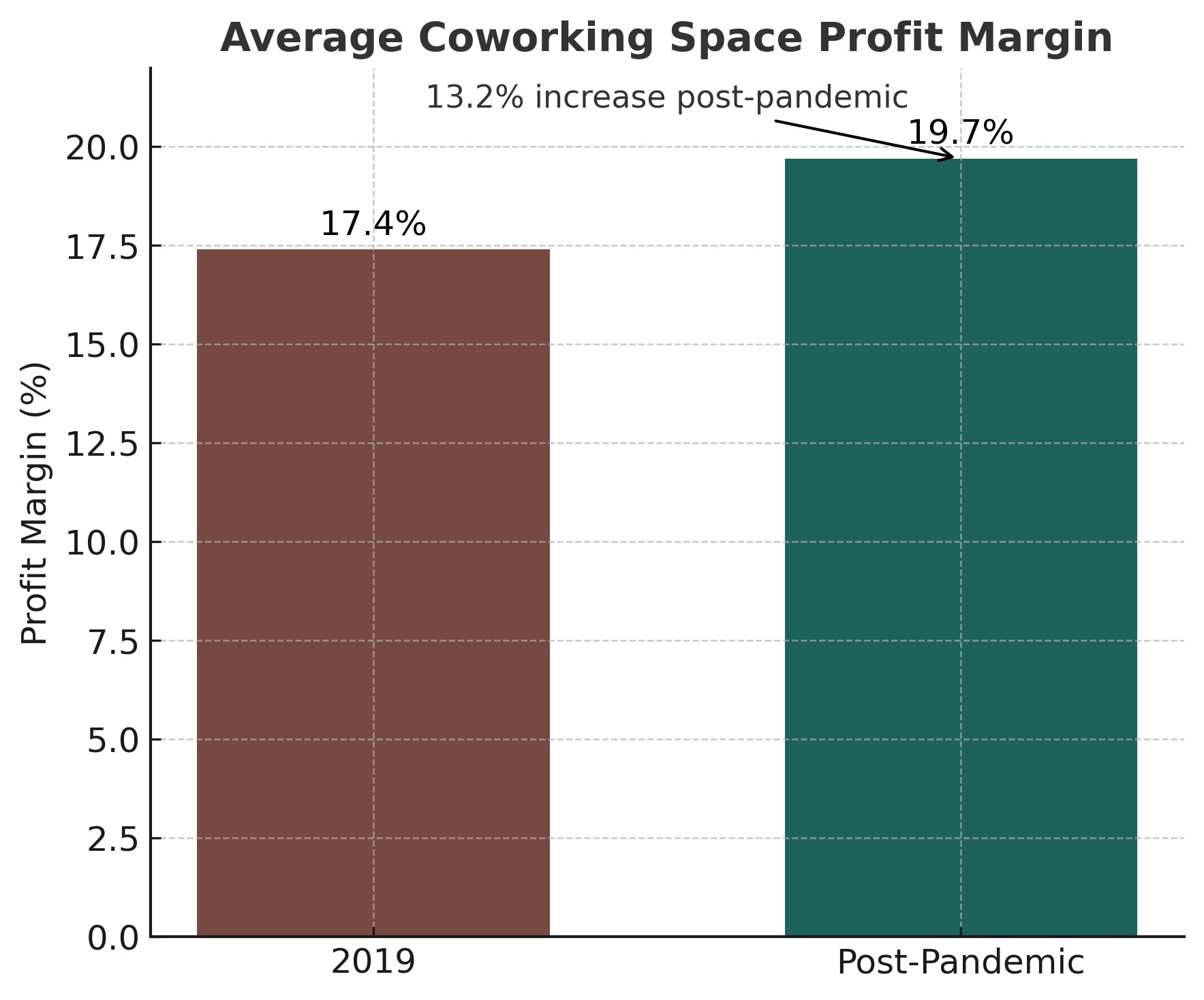
Profitability benchmarks for coworking spaces: where do you stand?
While coworking spaces vary widely in size, business model, and market, we can make a few educated guesses around what operators can expect to achieve based on data from DeskMag Global Coworking Survey 2025.
Global averages in coworking space profitability
- 54% of coworking spaces are profitable
- 28% are breaking even
- 18% are operating at a loss
Profitability by years in operation
Generally, coworking spaces are most likely to be profitable after four years of operation, suggesting profitability comes with time and experience.
- Year 1: ~15% profitable
- Year 2–3: ~35–40% profitable
- Year 4+: 60%+ profitable
Profitability by space size
Larger coworking spaces (150+ occupancy) are more likely to be profitable compared to small spaces of 50 desks or less. This is likely due to the ability to generate more revenue per member, both due to the size of the space and additional add-on services.
| Space Size | Typical Profit Margin (Full Capacity) | Example Break-Even Timeline |
| Small (<50 desks) | 5–12% | 12–20 months |
| Medium (50–150) | 12-22% | 12–24 months |
| Large (150+) | 22-32% | 18–36 months |
The importance of revenue diversification and profitability in coworking
Relying solely on memberships to keep your space profitable is risky. The most successful coworking operators blend multiple revenue streams (some predictable, some opportunistic) to create stability and growth. KWENCH is a great example of this – they offer an on-site cafe, fitness centre, events, and more to increase revenue.
1. Core memberships
Your bread and butter is still your member base, but the structure of those memberships can impact profitability. Here’s how your product mix affects profitability, according to Coworking Resources.
- Private offices: typically $900–$2,000/month depending on size and location
- Dedicated desks: $600–$900/month
- Hot desks: $350–$500/month
- Day passes: $20–$40/day for short-term flexibility
You may want to consider tiered pricing for different levels of access (weekday-only, extended hours, premium amenities). This can capture more members without needing to expand physical capacity.
2. Other services
Other income (especially if it’s predictable like virtual mail) can provide a reliable buffer for months when membership dips.
- Meeting rooms: $30–$50/hour, with block bookings for corporate clients
- Event space rental: $500–$1,500/day for private events, workshops, or networking nights
- Virtual office services: $50–$150/month for mail handling, business address, and occasional workspace use.
- Printing, storage, and lockers: small but steady monthly add-ons
In some mature coworking businesses, like Pacific Workplaces, virtual mail and other services account for 15–25% of total revenue.
3. Partnerships & collaborations
Strong partnerships with aligned local businesses can add revenue while creating mutually beneficial agreements for both parties.
- Lifestyle perks: partner with local gyms, coffee roasters, or wellness providers for member discounts, either as a value-add or a revenue-sharing arrangement
- Corporate memberships: offer enterprise packages for companies wanting remote teams to have a “third place” to work.
- Hotel and residential collaborations: similar to Industrious’ partnerships with Equinox and luxury apartment buildings, these allow you to tap into new customer bases without additional marketing spend.
How to increase profitability of your coworking space through controlling costs
In our conversation with Adam Hyman, Founder at KoWorks, he shared that coworking spaces often have bloated headcounts. It’s one of the biggest reasons why he decided to invest in Optix Automations, allowing him to manage three coworking locations by himself.
Efficient operations means every dollar saved is a dollar that can be reinvested into member experience.
1. Operate a lean team
In operating lean with minimal resources, technology will be your best friend.
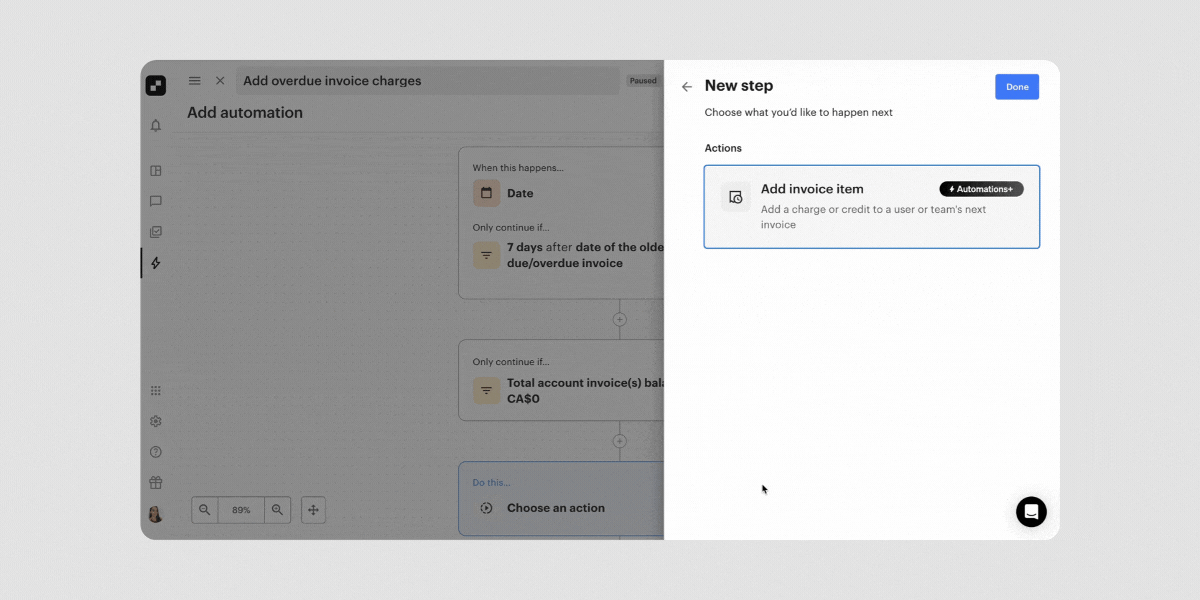
Automation-powered coworking software like Optix can help you fully automate:
- Bookings and billing
- Member onboarding and offboarding
- Access control and resource scheduling
With thoughtful automation, you can expect up to 15–25% reduction in administrative labor costs. Automating repetitive tasks with Optix also frees up your team to focus on higher-value activities like community building and sales.
Want more time to connect with your community?

2. Invest in energy and facility management
Facilities are one of your biggest fixed costs. They can also be a key area for savings.
- LED lighting and smart thermostats can cut electricity bills by up to 30%
- Space optimization: reconfigure underused common areas into rentable private offices or small meeting pods to boost revenue per square foot
- Preventative maintenance: regular servicing of HVAC, plumbing, and IT systems reduces costly emergency repairs — this is something Justin Moran, Founder at Workspace, invests in heavily!
3. Scale mindfully
Growing too fast can sink profitability. Instead:
- Track occupancy trends before committing to expansion
- Pilot new locations with a smaller footprint or pop-up format to test demand
- Keep fixed costs proportional to occupancy to protect margins during slow periods
How to use differentiation to improve the profitability of your workspace
With nearly 8,000 coworking spaces in the US, your ability to stand out is as critical to profitability as your pricing model. Here’s how you can start thinking about differentiating your coworking space.
1. Position your space around a niche
Coworking niches have been exploding in popularity, from coworking spaces for therapists to wellness coworking spaces and everything in between.
- Industry-focused spaces: target a specific vertical like creatives, tech startups or wellness professionals and tailor amenities accordingly
- Location-driven identity: position your space as a “neighbourhood coworking hub” with hyper-local events and partnerships
Brooklyn Hourly Offices created a thriving coworking space made just for therapists, creating a unique point of differentiation in their crowded New York City coworking market and finding enough success to scale their operations in less than a year.
2. Add value to your community
Doubling down on community building efforts can lead to a more profitable space. This might mean:
- Host weekly events like networking breakfasts, skill-shares, or after-hours socials to deepen member connections
- Support member-led initiatives, from art shows to charity drives, to foster ownership and loyalty
- Provide mentorship opportunities by partnering with experienced entrepreneurs or local business leaders
Suite Genius differentiates themselves in the Vancouver, BC coworking market by being a local neighborhood hangout spot with a strong sense of community.
How to improve the profitability of your coworking space
Let’s take a look at how to improve the profitability of your coworking space using the points we discussed above.
1. Assess cost structure and break-even
Before making changes, you need a clear financial baseline.
- Identify fixed costs: rent, utilities, salaries, software subscriptions, insurance
- Identify variable costs: supplies, marketing spend, event costs, contract labor
- Calculate break-even occupancy: for most spaces, this falls between 70–75% capacity
Example: if your fixed monthly expenses are $35,000 and your average member spend is $500/month, you’ll need 70 members to break even.
2. Optimize core revenue streams
Your memberships are the engine of your business. Fine-tuning them and finding the right cost ratio can significantly boost profitability.
- Reassess pricing at least annually to reflect market demand and inflation
- Introduce commitment incentives: offer discounts for 6–12 month terms to stabilize income
- Upsell add-ons at the point of sale ie. virtual mail, locker rental, or extra meeting room credits
Example: one operator increased annual revenue by 8% simply by introducing a prepaid annual membership option with a small discount.
3. Add high-demand add-on services
Additional revenue, be it from meeting room rentals or virtual mail services, protects you from membership fluctuations.
- Quick wins: meeting room rentals, event space, virtual office services, podcast studios.
- High-margin perks: partner-led wellness classes, on-site cafés, premium coffee subscriptions.
- Monitor ROI: track which services deliver the highest revenue per square foot or per staff hour.
Example: a 60-desk space earned an extra $1,800/month by converting an underused lounge into a rentable podcast studio.
4. Invest in automation
Automation reduces admin overhead and improves the member experience. Automation-powered coworking software like Optix helps you automate across the entire member journey so that you can keep costs low while scaling your space.
Operators report 15–25% savings in admin labor costs when fully implementing automation tools making it one of the best things you can invest in when it comes to your business. Learn more about Optix.
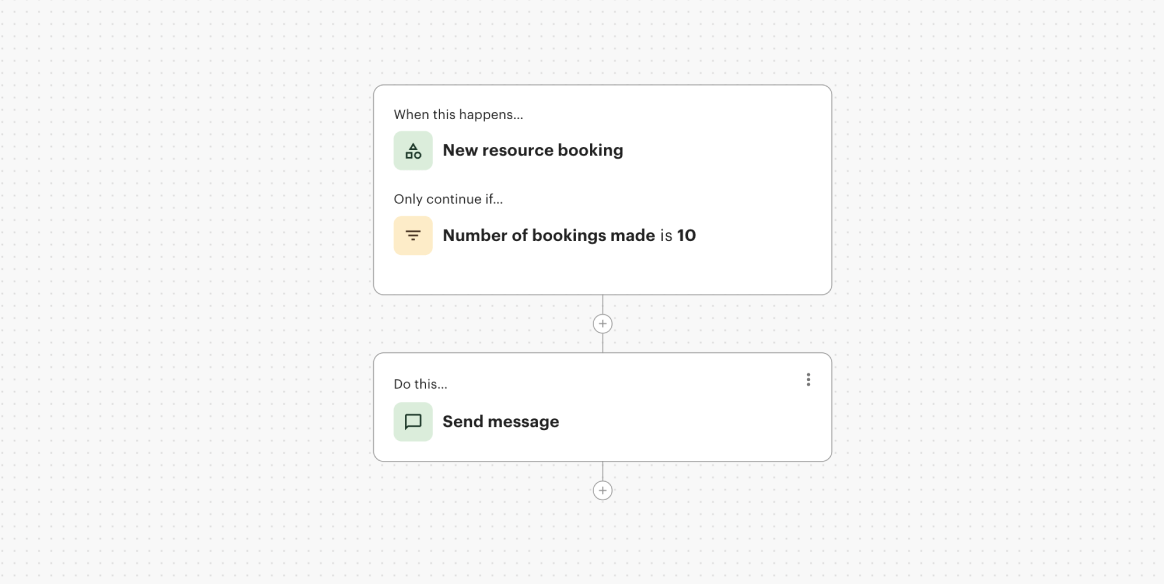
5. Build brand differentiation
Differentiation drives loyalty, referrals, and higher retention rates.
- Develop a niche: serve a specific industry, lifestyle, or location identity
- Create signature experiences: unique events, member perks, or specialized amenities
- Invest in visual identity: professional photography, brand-consistent interiors, and cohesive marketing materials
Example: a surf-town coworking space integrates board storage and showers — instantly memorable and relevant to its audience.
6. Reassess efforts on a regular basis
Continuous improvement keeps your space competitive.
- Review KPIs: occupancy, retention, average revenue per member, ancillary revenue %, and net margin
- Survey members: identify emerging needs before they impact churn
- Adjust strategies: drop underperforming services, reprice as needed, and reinvest in growth areas
Set quarterly “profit sprints” where you focus on one or two high-impact initiatives, then measure their effect on the bottom line.
Get a free coworking KPI cheat sheet

Yes, coworking spaces, profitability is within reach
Profitability in coworking is within reach. By diversifying income, running lean, and building a strong community, you can transform your space from break-even to thriving.
One of the most effective ways to increase profitability? Automation. Automation is helping coworking operators around the world run more efficiently without breaking the bank. And you can do it too.
Want to see how automation can reduce costs and increase member satisfaction? Book a free Optix demo to explore tools that help coworking operators grow profitably.
Run a profitable coworking business with Optix

Frequently asked questions
On average, global coworking spaces operate at margins of around 15–20%, depending on maturity, utilization, and revenue mix.
On average, it takes 12–24 months for a medium-sized coworking space to reach profitability. Smaller spaces may take 12–18 months, while larger spaces can take 18–36 months to break even due to higher upfront costs but often achieve higher long-term margins.
Globally, about 54% of coworking spaces are profitable, 28% break even, and 18% operate at a loss. Profitability rates improve significantly after the first year of operation.
Core membership plans (private offices, dedicated desks, hot desks) remain the largest revenue driver. However, ancillary services — such as meeting room rentals, event space, virtual offices, and premium amenities — can make up 15–25% of total revenue in well-run spaces.
Coworking platforms like Optix streamline operations, track KPIs, and automate workflows. They can reduce admin time by up to 50%, improve member experience, and free up resources for growth-focused initiatives.



